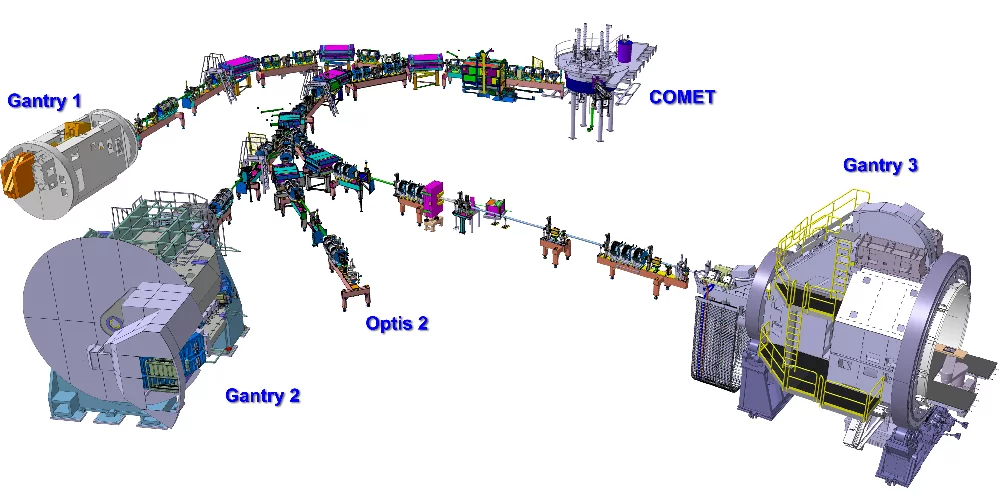Where do the protons come from? For radiation therapy with protons, PSI uses its own proton accelerator, the compact superconducting cyclotron COMET (COmpact MEdical Therapy cyclotron).
The accelerator, which has a diameter of 3.2 meters, contains an ion source in which hydrogen atoms are continuously split into negatively charged electrons and positively charged protons in fractions of a second. An electric field sucks the protons into the cyclrotron, also known as a circular accelerator. There, the protons rotate 630 times on a spiral circular path before being extracted into a vacuum tube with the help of electric fields. In the tube, the protons are bundled into a 5 to 7 mm wide beam by magnets on the outside and guided at 61 per cent of the speed of light about 50 metres to one of the therapy facilities.
A kicker magnet at the output of the cyclotron is used to switch the beam on and off quickly. The switching time is 200 µsec from the trigger signal of the therapy control system to the disappearance of the beam signal at the treatment site. Additional switch-off elements (safety function) are the reduction of the cyclotron high frequency, the switching off of the ion source as well as several mechanical beam stoppers.


